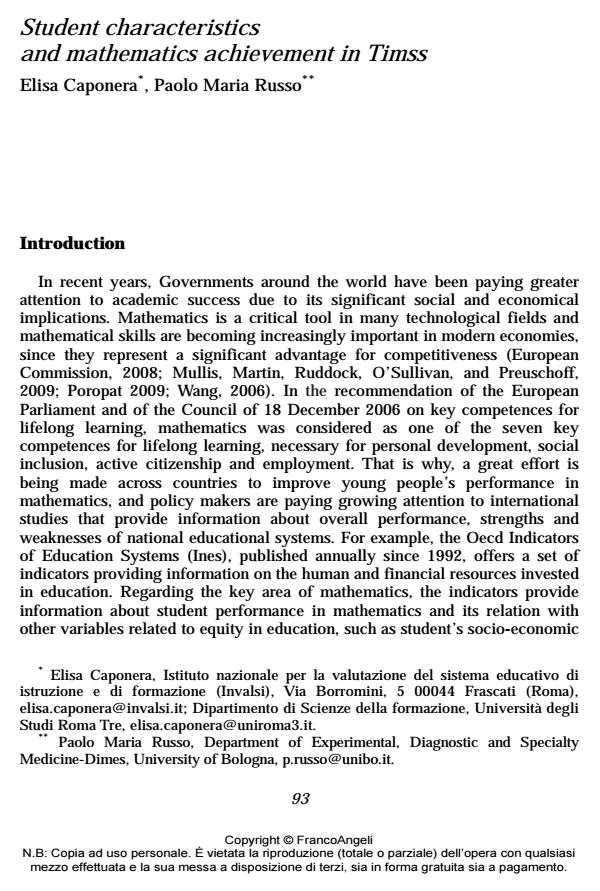Student characteristics and mathematics achievement in Timss
Journal title CADMO
Author/s Elisa Caponera, Paolo Maria Russo
Publishing Year 2015 Issue 2014/2
Language Italian Pages 13 P. 93-105 File size 76 KB
DOI 10.3280/CAD2014-002008
DOI is like a bar code for intellectual property: to have more infomation
click here
Below, you can see the article first page
If you want to buy this article in PDF format, you can do it, following the instructions to buy download credits

FrancoAngeli is member of Publishers International Linking Association, Inc (PILA), a not-for-profit association which run the CrossRef service enabling links to and from online scholarly content.
In the present study, the relationship between student characteristics and mathematics performance was evaluated using a structural equation modeling approach. Italian students participated at Timss 2011 field test (N = 1264; 52% female, mean age: 13 years and 10 months ± 6 months) completed a questionnaire including measures of socio-economic and cultural background, general reasoning ability and self-concept in mathematics and the Timss mathematics achievement test. A mediation structural equation model assessed the direct and indirect effects of the general reasoning ability test and socio-economic and cultural background through the mediation of selfconcept in mathematics. The results showed that all measures were significantly associated with mathematics achievement test, furthermore selfconcept partially mediated the effects of socio-economic status and general reasoning ability.
Keywords: Timss, mathematics achievement, student characteristic, self-concept, cognitive ability.
Elisa Caponera, Paolo Maria Russo, Student characteristics and mathematics achievement in Timss in "CADMO" 2/2014, pp 93-105, DOI: 10.3280/CAD2014-002008